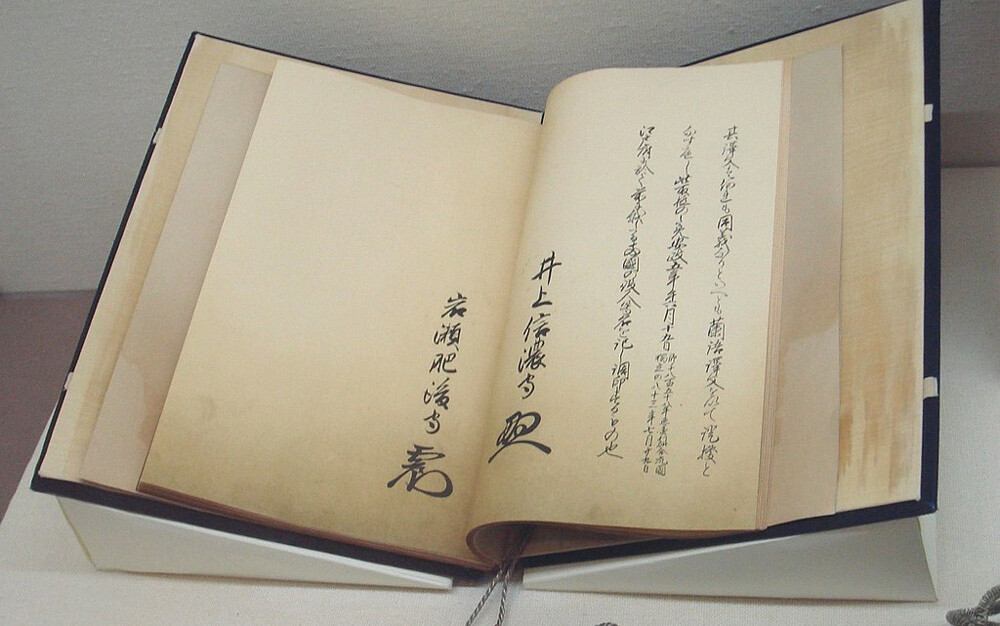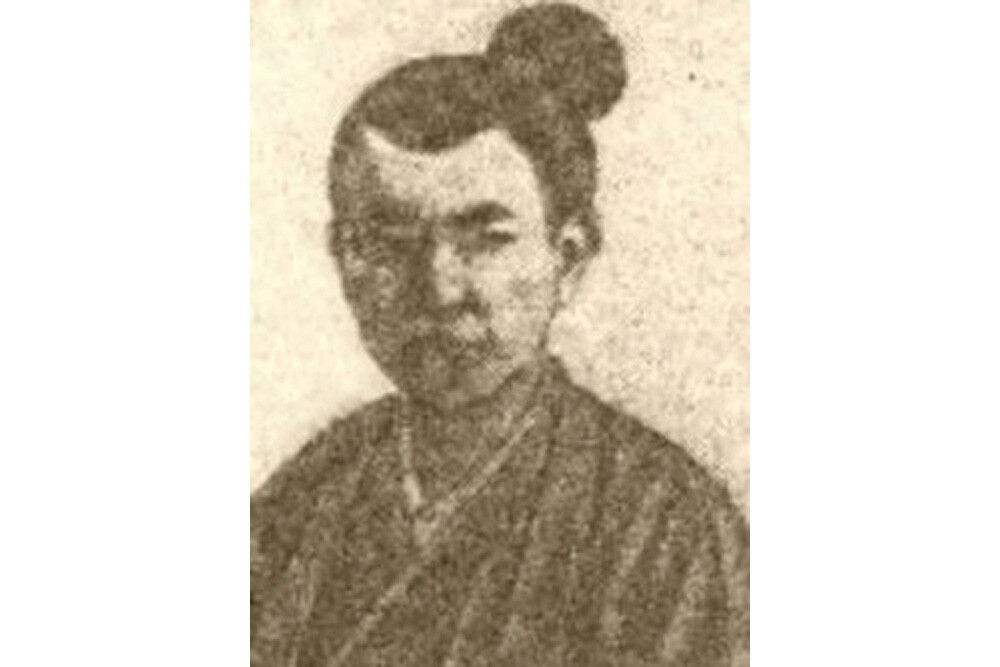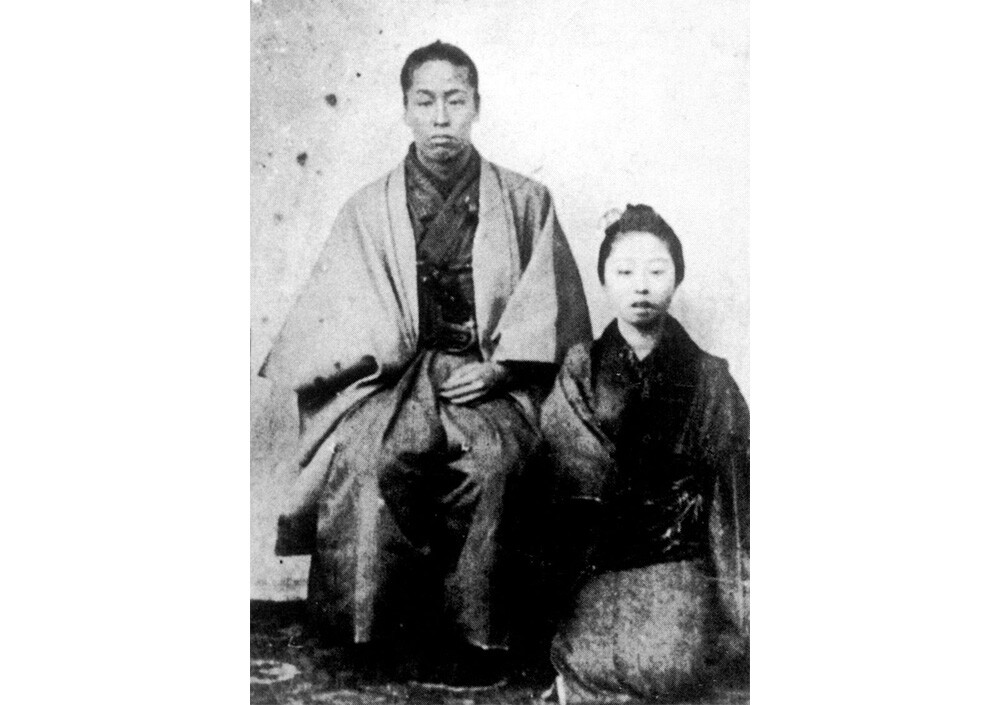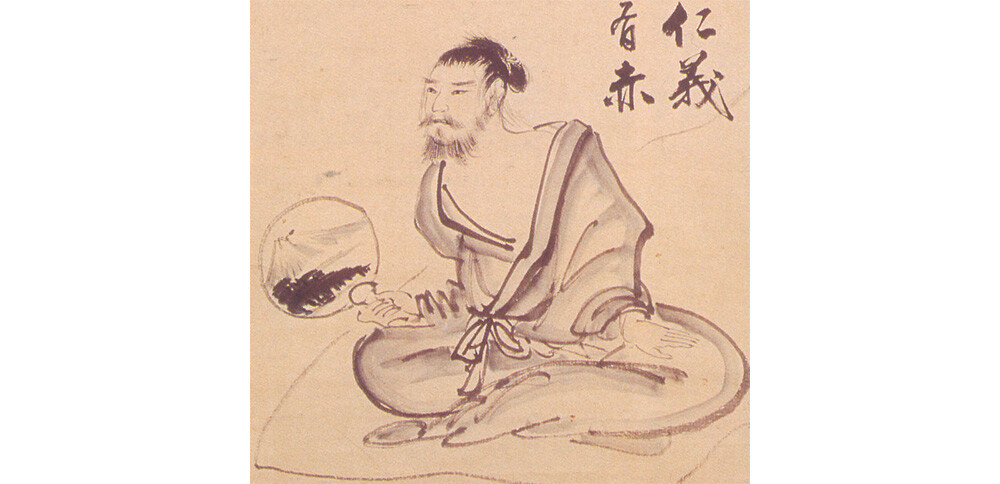The 4 Great Manslayers: Japan's Badass Samurai Assassins

Before the current restrictions, Japan let just about any foreign butthole into the country, but it wasn't always like this. Between the 1630s and 1850s, Japan had a strict isolationist policy that closed it off from the outside world except for a few select ports (which, incidentally, eventually helped create a Japanese gay electro-ronin.) And it's actually kind of surprising that the policy of keeping foreigners out of Japan ever ended, seeing as it was supported by a group of elite assassins who went down in history under such names as The Four Great Manslayers, The Four Butchers, or Heaven's Punishment Against the Enemies of Imperial Restoration. Of course, any badass monikers bestowed on them was supported by equally badass details ...
First, A Quick History Lesson
In 1853, Matthew Perry (not the one you're thinking of but GOOD LORD would I pay a lot of money to watch that remake of Friends) arrived in Japanese waters with warships that were so ahead technologically to what Japan had at the time, it was basically like getting a visit from a Borg cube. Perry then metaphorically cocked his shotgun, cleared his throat, and said, "Boy, howdy, it would just be super swell if you guys ended your 220-year-long isolationist policy and opened up your ports to the West. What happens if you refuse? What am I, a fortune-teller? I'll give you a year to think it over. Byeeeee!"

This threw Japan into a frenzy. Some wanted to surrender, others wanted to fight, and then a third group showed up saying, "We should overthrow the shogun and restore the emperor to power." By the time everyone else finished replying, "What? That's not … We're not even talking about that," the third group already had their swords out and were proclaiming, "Well, we're talking about it now."
At the time, the emperor was a powerless figurehead, but there was a growing number of samurai who wanted to put an end to that and the military rule of the shogun. They got a LOT of support for their cause once the shogunate capitulated and signed the Treaty of Amity and Commerce between Japan and the United States in 1858, which boiled down to: Japan opens up a bunch of ports to the US, sets really low import and export duties, gives up any right to prosecute foreigners under their laws, but in exchange gets … hmm … oh, this piece of string that one of the dignitaries found in his pocket!

It was a humiliating defeat for Japan that helped bring an end to the shogunate and the restoration of the emperor as the leader of the country. But the supporters of the old regime were apparently big fans of Dylan Thomas cause gently into that good night they did not go, spending years fighting the imperial loyalist, during which time four killers from the second camp left their bloody mark on Japanese history. They were …
Kawakami Gensai: Loving Husband And Friend, Bloodthirsty Assassin, Anime Inspiration
A lot of people tended to overlook Kawakami Gensai, which is not a quip about his height, though he did stand a whopping 4'11". And those who did notice him usually quickly backtracked while going, "Sorry, sorry, I thought you were …" because young Gensai was apparently so dainty and fair-skinned, a lot of people mistook him for a woman at first glance.

via Wiki Commons
Not showing a lot of promise during his martial arts training, a 16-year-old Gensai was appointed to Kumamoto Castle to basically be its janitor. Then one year, he accompanied his lord to Edo (modern-day Tokyo) … just as Matthew Perry arrived in Japan. Seeing the country eventually surrender to a foreign power created a strong sense of "Oh, HELL no" inside Gensai, and he decided to do brutal murder about it.
See, it turned out that the reason Gensai didn't do that great during training when he was young was that he thought fighting with bamboo practice swords was a waste of time. Later, when everyone stopped paying attention to him, he practiced with a real katana in between his sweeping-up duties, eventually developing a lightning-fast style that took advantage of his small size. He was reportedly able to use just one hand to pull out his sword from a low crouching position and cut a man in half from balls to brains. He quickly became one of the most fearsome assassins fighting for the royalist side, earning himself the nickname of "The Viper" … you know, to go with his other badass nickname of one of the four "great manslayers."

via Wiki Commons
A lot of assassinations (often carried out in broad daylight) were attributed to Gensai, but only one has been confirmed. Sadly, it's not the one where, according to legend, he was drinking with his fellow royalists when someone started talking about a particular supporter of the shogunate who could particularly eat a mountain of dog doo doo. Upon hearing this, Gensai reportedly went out and later returned to the party with the man's head dripping blood all over the floor. There's no proof this really happened, but it'd make sense because while everyone described the man as a calm and kindhearted friend who loved his family, Gensai was also known for being especially vicious and brutal during combat.
Later in life, Gensai was imprisoned, but shortly after that, his side won, the shogunate was abolished, and Emperor Meiji took the throne. Great news for Gensai, right? Well … not exactly. Emperor Meiji was actually a supporter of westernization, while Gensai was a strong advocate of "expelling the barbarians " from Japan and probably also spitting in their tea on their way out. And he would NOT shut up about it. So a few years after being released from prison, he was arrested on most likely trumped-up charges and executed. But his legacy lives on since Gensai ended up inspiring the character of Himura Kenshin from the popular manga and anime Rurouni Kenshin!
“Worth it.”—probably not Kawakami Gensai.
Kirino Toshiaki: The Nicest-Smelling Killer Ever
A few years into Emperor Meiji's reign, some of his supporters rebelled against him for just a whole bunch of different reasons. Books and Ph.D. theses have been written about it, but to oversimplify it super quickly: some samurai did not like that the emperor was revoking samurai privileges and getting rid of social classes altogether, others did not like the idea of low-born non-samurai being admitted into the Imperial Army, and others just didn't like the idea of Japan westernizing.
Kirino Toshiaki was 100% not in that last group. He loved Western stuff and was especially fond of French cologne.

via Wiki Commons
It's said that after the Battle of Shiroyama (1877), a fictional version of which was depicted in The Last Samurai, Toshiaki's body was easily identified because it just reeked of perfume. Or maybe it was found so quickly because he was the pimpest-looking corpse on the battlefield since Toshiaki participated in the last great samurai battle in a tailor-made uniform that he ordered from France. He swagged that up with a solid gold watch in his pocket and a custom-made katana with gold-plated parts and accessories. The guy was definitely a bit of a dandy, but he also didn't earn that "manslayer" (hitokiri in Japanese) nickname ironically.
Toshiaki had a tough start in life. After his low-rank samurai family lost their government stipend, he supported them by farming. As such, he had little formal samurai education; he did take some sword lessons but was mostly self-taught in combat. Thankfully for him, he turned out to be a great teacher. When clashes between pro-shogunate and pro-emperor forces erupted all over the country, Toshiaki traveled to Kyoto, where he assassinated a suspected shogun spy and genuine swordmaster on the street in broad daylight. Most likely by approaching him from an upwind position. Another time, he was ambushed by three killers and lost two fingers on his left hand. And since this included his middle finger, he could only give the attackers the bird in the metaphorical sense by chasing two of them off and killing one.

via Wiki Commons
Toshiaki was often called uneducated even by his friends, but he had a talent for leading and inspiring troops. His wife was also an accomplished warrior herself who led a women's auxiliary troop at Shiroyama, which, unlike her husband, she survived before ultimately dying in 1920, having lived through the invention of the radio, the refrigerator, and the electric toaster.
Tanaka Shinbei: “Heaven’s Punisher”
In the rigidly hierarchical Japan of old, everyone was supposed to know their place. The samurai were at the top, and while they often wrote about how much respect they had for peasants and craftspeople for growing rice and making pretty things for them, etc., it was always with an implied or sometimes direct follow-up of "But please, in all that is holy, do NOT try to touch us cause eeeeew." That's what makes Tanaka Shinbei's story so absolutely bonkers.
Shinbei was not born a samurai. Sources are murky but he might have been the son of a ferryman, or a druggist, or a farmer. But he was apparently fascinated with martial arts from an early age and somehow managed to swing lessons in the Jigen-ryu style, which expects you to kill your opponent with the first blow and implies that you are kind of a wuss if you need two slashes to take someone down. Not many people called Shinbei a wuss, and definitely never more than once. The man was a sword prodigy, and after performing his first assassination for the royalists, he became a retainer of one Takechi Hanpeita, who was impressed with the young man's skills. With this, Shinbei officially became a samurai, and many people quickly became corpses after that.

via Wiki Commons
Shinbei has the most confirmed kills out of all the Four Great Manslayers. Among MANY others, he was involved in the assassination of Ii Naosuke, the person who signed the Treaty of Amity and Commerce between Japan and the United States, and headed the so-called Ansei Purge when the shogunate brutally hunted down and executed supporters of the emperor. One possible reason for Shinbei stacking up more bodies than during a Squid Game version of Jenga was due to Takechi Hanpeita having a powerful psychological hold on his followers, teaching them that their killings were really just "Heaven's punishment."
Eventually, Shinbei's assassinations became one of the reasons for the creation of the Shinsengumi, an elite military police force tasked with protecting the shogun's supporters in Kyoto. But all legends must come to an end, and Tanaka Shinbei was ultimately arrested on put on trial. During it, when the prosecution presented the murder weapon, Shinbei asked if he could see it really quickly, just for a second, and definitely not for any weird reason. AND THE IDIOTS ACTUALLY LET HIM HOLD IT. Naturally, Shinbei immediately used it to cut his throat and, I assume, died while flipping everyone off with both hands.
Okada Izo: The Tattooed Showman
Like Tanaka Shinbei, Okada Izo was also a follower of Takechi Hanpeita, but some sources doubt that he really bought into the whole "Heaven's punishment" get out of guilt-free philosophy. Described as big and liking women and sake but with few actual beliefs, it's likely that Izo just wanted a good fight, and siding with the royalists gave him a lot of chances to do just that. There was an exception to that, though. He apparently had a genuine hate-boner for the Ansei Purge and killed a lot of people who had a hand in it.
Many of his victims were government officials, Kyoto policemen, and other people associated with the purge. One time, he even went after a mistress of an Ansei commander, but instead of killing her, he tied her to a bridge as a public display. Izo really liked his displays. When he and three other men killed a guy who ratted out royalists during the purge (by strangling him, because they didn't want to stain their swords with his blood), Izo later took the man's corpse, spit-roasted him with a bamboo stick, and left his body outside so people could throw rocks at it.

Another time, he was supposed to kill two men for reasons that weren't Ansei Purge related and so didn't interest him. But he changed his mind when the men's families begged him to spare their lives. So instead, Izo tied them naked to a stake by the river.
Izo also moonlighted as a bodyguard, stopping at least three assassination attempts in the process. One time, he apparently just roared at a couple of attackers, causing them to run away. When the shogun's officials finally captured him, though, they had so little evidence on him that they banished him from Kyoto on account of him having tattoos, which can still get you kicked out of places in Japan to this day. After being sent back to his hometown and getting tangled up in another assassination plot, he was arrested, tortured for days, and finally executed. But like Kawakami Gensai, his legend lives on as there are characters inspired by Izo in three mangas: Rurouni Kenshin, Gintama, and Saint Seiya. Although, his ultimate legacy was probably helping create Mitsubishi.

via Wiki Commons
One time, Izo and a few other assassins were tasked with killing a man after first getting him drunk at a fancy restaurant. They strangled him and threw his body in the river. However, the men were joined that day by the victim's friend Iwasaki Yataro, who somehow got out of the whole ordeal alive and went on to create Mitsubishi, an international conglomerate that possibly only exists today because Izo didn't feel like tying up loose ends one night.
Follow Cezary on Twitter.
Top image: Tsukioka Yoshitoshi






